- Home
- Larry McMurtry
Oh What a Slaughter Page 2
Oh What a Slaughter Read online
Page 2
and Some Others
The massacres I want to look at closely in this inquiry are six:
The Sacramento River Massacre: Spring 1846
The Mountain Meadows Massacre: September 11, 1857
The Sand Creek Massacre: November 29, 1864
The Marias River Massacre: January 23, 1870
The Camp Grant Massacre: April 30, 1871
The Wounded Knee Massacre: December 29, 1890
In addition I want to consider two well-known and much studied military massacres, Fetterman and Custer, where something occurred that is rather rare in military history: the total wipeout, a battle in which one side succeeds in annihilating the other to the last man. This happened at Fort Phil Kearny in 1866 and at the Little Bighorn a decade later. (It also happened at the Alamo, which is outside my scope.)
These six massacres were dreadful events, leaving scar tissue that will always be a part of our history. But they were not without precedent. Patricia Nelson Limerick and others have reminded us forcefully that massacres of Indians did not start in the West. The whole continent was strongly contested: the Indians yielded up none of it easily. But, first or last, East or West, the Indians were up against people with better equipment; as the whites continued to push westward, many massacres, large and small, occurred. The elimination of some seven hundred Pequots, many of them burned alive in a stockade, is one of the most frequently mentioned Eastern massacres.
Some years ago I wrote a screenplay about one interesting frontier encounter, a small massacre that occurred in what is now Indiana, in 1824. I was adapting a novel based on this massacre, Jessamyn West’s The Massacre at Fall Creek; my adaption has yet to reach the screen, though it still might.
In the Fall Creek incident, records of which are scanty indeed, settlers on what was then the very edge of the advancing frontier made a preemptive strike against a small band of Indians who were foraging, fishing, picking berries. Nine Indians were killed in the attack—most of the bodies were thrown down a well. Like many such attackers, the settlers near Fall Creek considered that they had merely been taking protective measures; in this case, though, instead of reducing the threat to their families, they increased it. The powerful tribes to the north and to the west were outraged—suddenly the whole frontier came under threat. The Indians were thought to be planning a massive, coordinated attack.
Up to this point in time, according to Jessamyn West, it had not, as a matter of law, been a crime to kill Indians; but the government, headed by President James Monroe, became fearful of a widespread revolt. The hastily arrived at solution to the crisis was to make Indian-killing a crime retroactively. A show trial was rapidly convened: able attorneys were provided both for the prosecution and the defense. The Indians, in all their power and majesty, came to witness this strange instance of white man’s justice. In the end three white men were hanged by their own neighbors; one boy was spared. The Indians stayed off the warpath for a time, though plenty of war was to follow.
The massacre at Fall Creek was a very obscure incident—how much of what Jessamyn West wrote was based on historical research and how much on her imagination is now difficult to say.
To me the most interesting aspect is that (if this hastily created “law” was actually put in place) it didn’t work. Many more Indians were killed, by many more whites; it was to be a good long time in America before white men were judicially punished for killing Indians.
The Moral Taint
It is clear from the records that moral opprobrium did in time attach itself to many of the men who planned and executed the murders described in this book; but, in most cases, that was as far as matters went. The exception to this is John Doyle Lee, who—twenty years after the killing—was offered up by the Mormon church and made to take the blame for the Mountain Meadows Massacre. He was justly outraged at this turn of events, but the higher-ups in the Mormon church had decided to give the public a sacrifice, in the hopes that then the whole matter would be forgotten. (They were wrong about that; two books about Mountain Meadows have been published within the last year.)
John Doyle Lee
John Doyle Lee, outraged or not, was duly executed.
The sharpest contradiction to my point about the moral taint is surely John Milton Chivington, the fighting parson who organized and led the attack at Sand Creek in 1864. Chivington neither relented nor repented; he weathered the controversy with his head unbowed. Though he resigned from the army, he was never charged or punished. There were critics, but, in general, Chivington remained a hero to his fellow Coloradans—to many he is a hero to this day. There is even a town named for him in southeastern Colorado, only a few miles from the massacre site—Chivington, Colorado, a kind of ghost hamlet, not far north of the Arkansas River.
John Milton Chivington
Be as that may, there are yet those dead human beings—young, old, and in-between—who died in the massacres. They lost their lives, but not their moral potency. Hard as the men were who carried out these slaughters, conscience did, in time, stir in many of them. Long after the bodies had become merely bones, there were men who felt compelled to describe the horror they had participated in. Blame was imperfectly assessed, but guilt and outrage did make itself felt even in these small, vulnerable frontier communities. In most cases official inquiries were held, at the end of which the massacres were condemned. General Ulysses S. Grant himself called Sand Creek “murder,” and he later said the same about the killings at Camp Grant. This may not seem like much but it was important: Grant was a well-respected man. Even now inquiries are going on about the more recent massacres in Bosnia and Rwanda. Mass murder doesn’t go unnoticed! The repugnance decent people feel when faced with the slaughter of innocents eventually finds expression, though in many cases, no doubt, the worst killers, the really evil ones, entirely escape judicial reckoning. They probably sleep soundly and die un-molested in their beds. Only occasionally is an Eichmann or a Barbie brought to the bar.
During these massacres in the American West there were those who wished, as the killing went on and the blood spurted, that they had had the good sense not to saddle up that day. A good many of these eventually expressed rather dazed regrets; they had failed to anticipate that the reduction of one hundred or more human beings to the condition of meat in a meat shop would be as terrible as it turned out to be.
Ulysses S. Grant
These belated repentings didn’t change the terrible killings, but the fact that civilized human judgment finally rejects massacre is a hopeful sign.
Did Kit Regret?
Even the scout and Indian fighter Kit Carson, who had a strong stomach when it came to killing Indians, may have turned a little, conscience-wise, after taking part in the “perfect butchery” at the Sacramento River in 1846. This turning, if it occurred, didn’t prevent him from effecting the dreadful removal of the Navaho and the Mescalero Apache from their homelands in the 1860s. Kit invariably did what his superiors told him to do, whether he liked it or not; but, in these last instances, it is clear that he didn’t like what he had been ordered to do. He was nearing the end of his life, and, by this time, knew as much about Indians as any Westerner—more, certainly, than any of his superiors knew. It may be that he finally came to understand what a tragic undertaking these removals were—in fact they were slow massacres, people dying and dying as they struggled to keep up in what the Navaho call the Long Walk.
Kit Carson
Did Kit Carson wonder, at the end, if the whole enterprise of exploration and settlement, in which he had been perhaps the preeminent guide, or, at least, the guide who lasted the longest, had been worth it? Had it been, after all, a good thing? The right thing? What he felt we will never know. Except for a brief, dictated autobiography, Kit Carson, for forty years a scout in the dangerous West, kept his conclusions, if any, to himself.
John Chivington, long before he organized the attack at Sand Creek, had come to believe that he had an absolute right to kill Indians. He made it clear,
when the time came to ride, that he didn’t want to hear from anyone who harbored sympathy for the Cheyenne and the Arapaho. Reportedly he even told one volunteer that he longed to “wade in gore.”
At the Sacramento River, Kit Carson actually did wade in gore—it doesn’t seem that he enjoyed the experience.
John Milton Chivington never turned; he defended the action at Sand Creek to the very end of his life. Carson, who remained loyal to John Charles Frémont despite the Pathfinder’s many moral lapses, expressed no fondness for Chivington. Kit Carson took part in many, many Indian fights. It’s possible that, at the end, he would have welcomed peace.
John C. Frémont
* * *
A decent bibliography of the literature relating to these massacres would run to at least sixty or seventy volumes: and that would not include the hundreds of books that deal with Custer and the Little Bighorn. And yet it was Kit Carson—an illiterate scout—who produced the best phrase about the business of massacre when he referred to “a perfect butchery.”
All these massacres produced abundant butchery, fits of violence so extreme that they quite drove out reason. The few survivors and the many perpetrators alike were stunned by what had occurred. They were stunned to such a degree that it makes it difficult to judge the reliability of their comments, some of which were not delivered until months or years after the event. Some refused to speak of the massacre at all, while others, Ancient Mariner–like, seemed compelled to reveal the worst, and reveal it over and over again. Others made stumbling, rambling efforts to make it all seem less bad than it had been.
Only the hardest cases, the true believers, display absolute conviction. Those less firm often try to construct self-exculpatory defenses. It is not always easy for the chronicler to decide what testimony, if any, can be relied upon, though, in my opinion, people who lie about the massacres have a value to the record too. The lies people make up about extreme actions may be as revelatory as the few truths they manage to cough up.
After several of these massacres, even the most hardened of the perpetrators gave vent to wild exaggerations, particularly where body counts were concerned. Chivington, after Sand Creek, at first reported that he had killed between five and six hundred Indians, or rather more than had been in the camp to begin with—the actual figure was around 140, the same number the historian Sally Denton gives for the Mountain Meadows dead, and very close to the count at Wounded Knee (146).
The most difficult thing for the historian of these massacres to judge is tone of voice. We may know what someone said, but how did he or she say it? Take Kit Carson’s “perfect butchery” remark. He said it, but in what tone: happily, matter-of-factly, wearily, with an element of sadness or disgust in his tone? Did he sound resigned? Kit Carson had seen much Western death. He had killed Indians and scalped them, but most of his battles had been small-scale endeavors, a few Indians versus a few mountain men; they were bloody fights, to be sure, but still on a very different scale from what happened on the Sacramento River.
Chivington’s tone we may guess at; he was almost always angry, even when he was not killing Indians. But what about Brigham Young’s tone, or tones, during the years when he was trying to cover up Mountain Meadows? At the time the massacre occurred the U.S. Army was on its way to Utah, to curb Mormon excesses. As it happened, the army didn’t get there until the following year, but at this juncture Brigham Young would have been careful not to say anything too inflammatory. But he was thunderous and fiery when he demanded that the Mormons of southern Utah hew to the official line, which was that the Paiute Indians did the killing. Brigham Young was a politician as well as a church leader; he had more than one oratorical instrument in his orchestra and he shifted skillfully from one to another. Today we’d see him on television and be able to judge for ourselves, but as it is we have to base our judgment on letters, diary entries, speeches, sermons, depositions, and records whose provenance is not always well established.
Brigham Young
In the case of most of these massacres, the tones in the reports seem to vary between jeremiad and lament—battle reports through the ages often do much the same. Few observers of what happened at Sand Creek or Wounded Knee were impartial. The participants in the massacres were either trying to kill people, or trying to avoid being killed by people, a circumstance that doesn’t enhance one’s objectivity.
Everyone who has written about these massacres admits at some point that they are required to make judgments on the basis of very quivery evidence. The ground is rarely firm or the truth plain.
Nothing illustrates this better than the vexed question of body counts, which is where I’d like to begin my inquiry.
Counts
The very first thing one notices when sifting through these reports of massacres—whether personal, official, or journalistic—is that the body counts vary widely from report to report. As good an example as any are the body counts from Wounded Knee.
When I first began to rummage around in this literature I went first to The New Encyclopedia of the American West, published by Yale, an invaluable reference book that I use virtually every day. I looked up Wounded Knee first, where I found what I already knew: that the reason the U.S. Army decided, on that fateful day in 1890, to arrest Chief Big Foot and remove his people to a different, distant agency was part of a broad effort to suppress the Ghost Dance, a recently arrived religious phenomenon that—puzzlingly in my view—made both the military and civil authorities in South Dakota extremely nervous. (I will return to the matter of official anxiety before we are done.)
Chief Big Foot
Before reading the whole of the long Wounded Knee entry, I flipped back to the Ghost Dance entry, where I read that “almost three hundred Indian men, women, and children were massacred by the 7th Cavalry.”
That figure was higher than any I had previously seen for this massacre; other sources had put the dead at between two hundred and 230.
But when I flipped back again in my big reference book to the entry on Wounded Knee and read on through the article, the figure given there was 146 Indian dead; 146 also happens to be the figure given on the big historical marker at the site itself.
Time, and patient counting, had whittled down the figure given in the Ghost Dance entry by more than half.
It is well to remember that the Sioux, at Wounded Knee, though surprised and vastly outgunned, still managed to account for a good many soldiers, perhaps as many as thirty-one.
The widest and wildest swings in numbers of estimated dead at the other massacres are to be found in the histories of Sand Creek. Chivington’s estimate of five to six hundred is the high figure, and seventy is the low figure. The number of troopers killed is usually put at fourteen, some of whom died off site.
Present-day thinking about Sand Creek, as I have said, is that about 140 Indians died. Only seven prisoners were taken, two women and five children, all of whom were soon left at nearby Fort Lyon.
* * *
Lieutenant James Bradley made the first body count of army dead after the Battle of the Little Bighorn, in 1876. At the battlefield itself he counted 197 bodies—probably a pretty accurate figure just for the men of Custer’s command, though it left out Major Reno’s casualty figures, which Lieutenant Bradley was still unaware of. Major Reno lost thirty-two men, with 152 wounded. How many of the wounded later died I don’t know.
The Battle of the Little Bighorn was one of the most famous battles ever fought on American soil. There were soon to be recounts and recounts; in a sense the process continues to this day.
What of the Indian losses in that battle? First reports suggested two hundred Indians died, but, over time, this count has been whittled way down. More recent estimates put the number of Indian dead at forty-five. If you add to that the thirty-six warriors that Crazy Horse claimed had been killed at the Battle of the Rosebud, one week earlier, you get some eighty dead Indians, an enormous loss for a hunter-gatherer society; but, of course, these dead di
ed in glorious triumphs—the numbers of the fallen did not dilute the triumph much.
It is well to remember that Fetterman, the Rosebud, and the Little Bighorn were the greatest victories the Plains Indians ever achieved.
Of these, of course, the Battle of the Little Bighorn was the greatest. It was also the last.
It should be remembered too that Fetterman, the Rosebud, and the Little Bighorn were battles, warrior against warrior, which sets them off from the massacres I’m considering here. In these massacres many more women and children were killed than fighting men.
At the Camp Grant Massacre, for example, except for one old man and a “well-grown boy,” no warriors were killed, only women and children. Throughout the era of the massacres it was, overwhelmingly, women and children who were massacred.
William Fetterman
In the Sacramento River Massacre, Kit Carson said frankly that he had no idea how many were killed, but two other participants in that slaughter tried to guess at the number. Thomas Martin thought the dead numbered between 175 and 250, whereas Thomas Breckenridge thought the dead numbered between 120 and 150.
Our confidence in these counts must be tempered somewhat by the wildly varying guesses these same three men made as to how many Indians were there in the first place. Thomas Martin thought there were between four and five thousand, Kit Carson estimated one thousand, and Thomas Breckenridge, whose guess was probably the most accurate, thought there might have been around four hundred, of which perhaps 150 were warriors and the rest women and children.
* * *
When one is heading into mortal, no-quarter-given combat, careful counting is the last thing most people would attempt. A more or less normal fear instinct would encourage participants to think they see more Indians than are actually there.

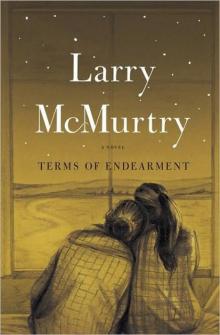 Terms of Endearment
Terms of Endearment Some Can Whistle
Some Can Whistle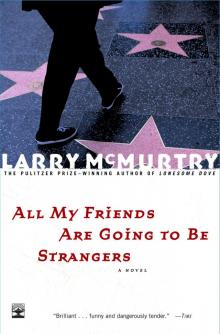 All My Friends Are Going to Be Strangers
All My Friends Are Going to Be Strangers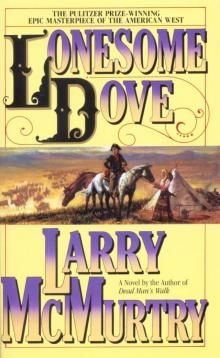 Lonesome Dove
Lonesome Dove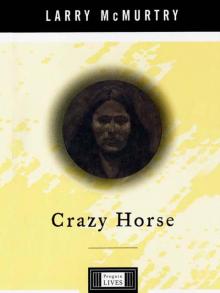 Crazy Horse: A Life
Crazy Horse: A Life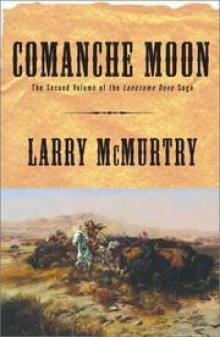 Comanche Moon
Comanche Moon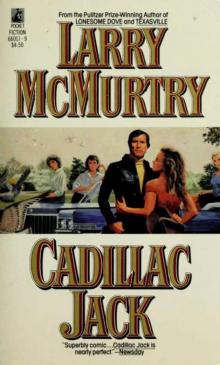 Cadillac Jack
Cadillac Jack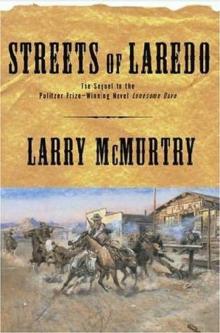 Streets of Laredo
Streets of Laredo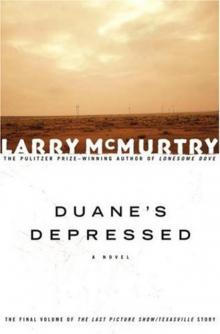 Duane's Depressed
Duane's Depressed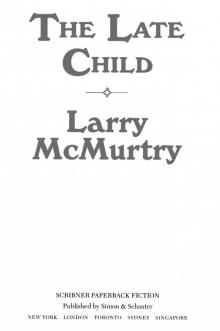 The Late Child
The Late Child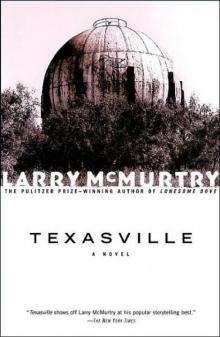 Texasville
Texasville Rhino Ranch
Rhino Ranch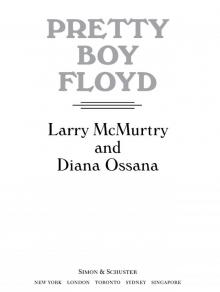 Pretty Boy Floyd
Pretty Boy Floyd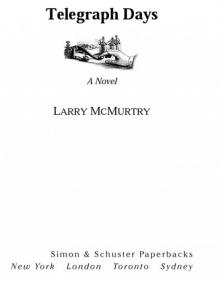 Telegraph Days
Telegraph Days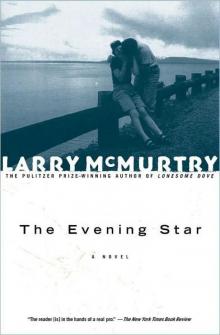 The Evening Star
The Evening Star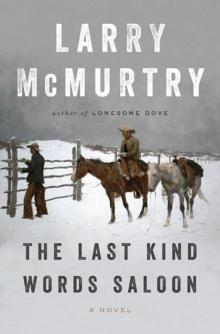 The Last Kind Words Saloon
The Last Kind Words Saloon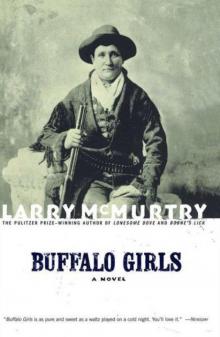 Buffalo Girls
Buffalo Girls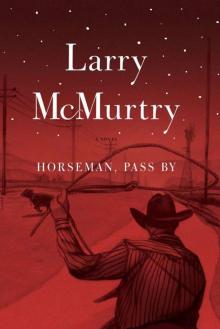 Horseman, Pass By
Horseman, Pass By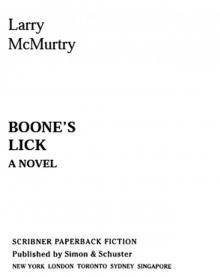 Boone's Lick
Boone's Lick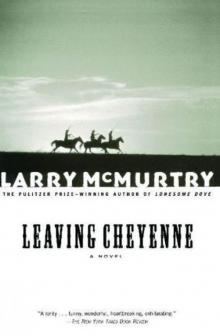 Leaving Cheyenne
Leaving Cheyenne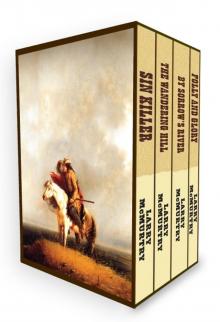 Sin Killer
Sin Killer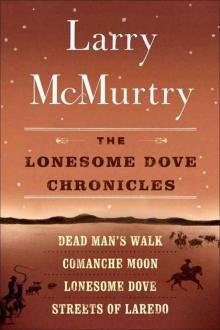 The Lonesome Dove Chronicles (1-4)
The Lonesome Dove Chronicles (1-4)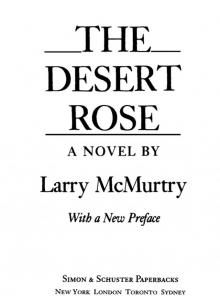 The Desert Rose
The Desert Rose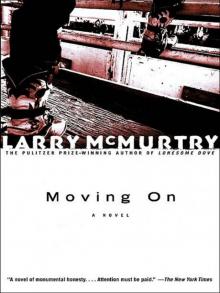 Moving On
Moving On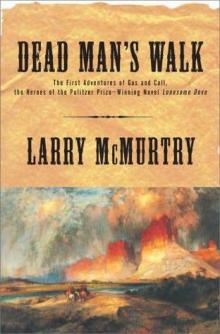 Dead Man's Walk
Dead Man's Walk The Last Picture Show
The Last Picture Show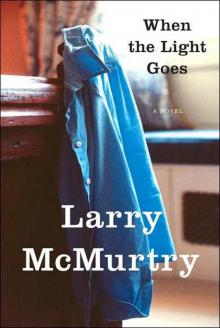 When the Light Goes
When the Light Goes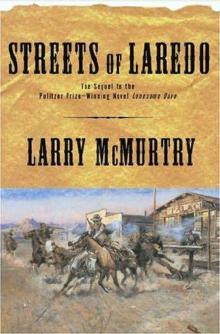 Streets Of Laredo ld-2
Streets Of Laredo ld-2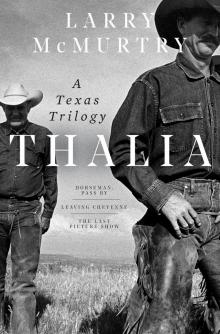 Thalia
Thalia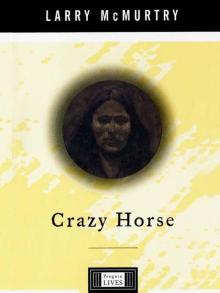 Crazy Horse
Crazy Horse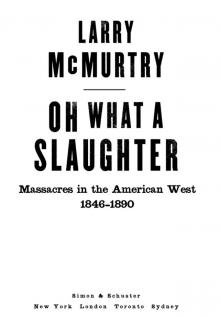 Oh What a Slaughter
Oh What a Slaughter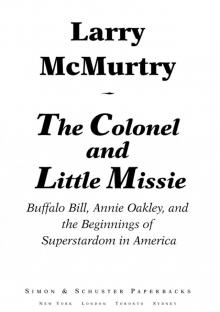 The Colonel and Little Missie
The Colonel and Little Missie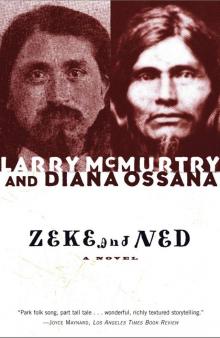 Zeke and Ned
Zeke and Ned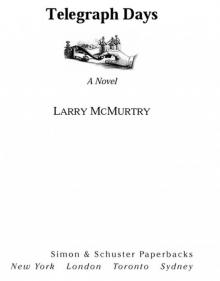 Telegraph Days: A Novel
Telegraph Days: A Novel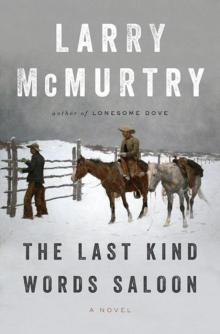 The Last Kind Words Saloon: A Novel
The Last Kind Words Saloon: A Novel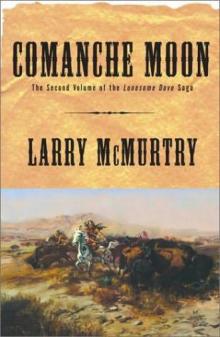 Comanche Moon ld-4
Comanche Moon ld-4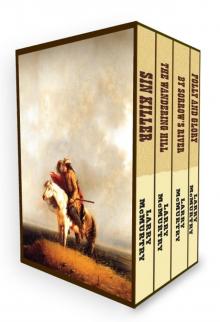 The Berrybender Narratives
The Berrybender Narratives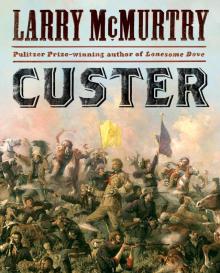 Custer
Custer